With the sad news of former Iowa State University coach Johnny Orr’s passing, I became curious about the brief references to his storied early days. It turns out Orr had a record-setting athletic career prior to entering coaching, where he became the winningest basketball coach at the University of Michigan and Iowa State University. The more I dug, the more interested I got. Perhaps the best place to start the story of John M. Orr is with his senior year at Taylorville High in Illinois, where he was part of an enthralling streak that captured the attention of the entire state.
As World War II dominated the nation’s hearts, Orr’s senior year of 1943-44 saw him become an all-state player in football and star on the baseball diamond. Standing a strong 6’3″ tall, Orr’s best sport was basketball and in his last season, the Taylorville Tornadoes basketball team coached by Dolph Stanley was expected to be a tough out. Despite being a small school of just 566 students, the Tornadoes boasted two elite players: Orr and fellow lanky teammate Ronald Bontemps. Week after week, excitement slowly started building as they culminated a magical run through the Illinois high school basketball state tournament by becoming the first undefeated team in Illinois history. On their way to an incredible 45 – 0 record, Taylorville triumphed over other Illinois schools triple and quadruple their size. To this day, a large picture commemorating the 1944 championship hangs in Taylorville’s gym. (The basketball floor was recently named after Coach Stanley.) Orr can be seen in the front row wearing 43 next to Bontemps, who is wearing 34. Coach Stanley is in the top right circle.
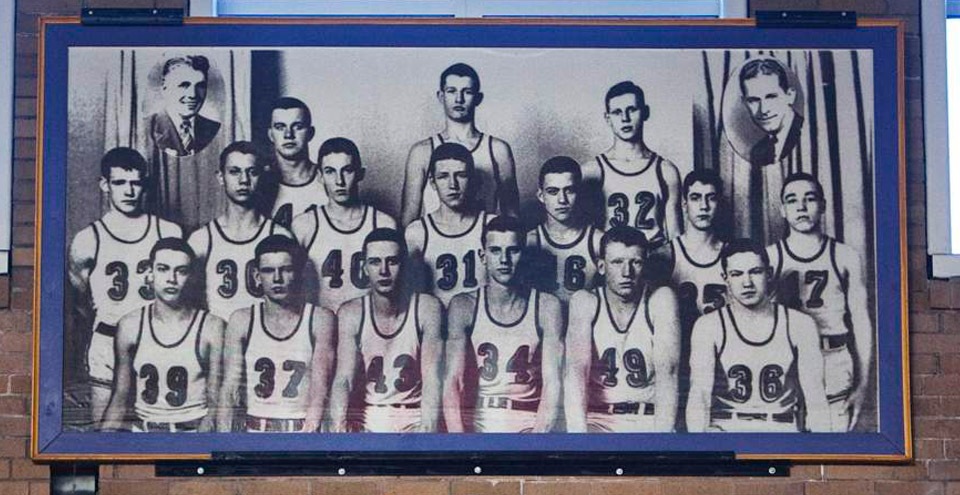
As one of the smallest schools in the entire field, Taylorville’s squad impressed so much that both Orr and Bontemps were named to the all-tournament team. Orr finished as the second leading scorer in the entire tournament–just two points out of first–with 64 points in just four games–an average of 16 ppg. Bontemps was no stiff either with 49 points, good for fourth overall and an 12.25 ppg average. (The tournament’s leading scorer, Paul Schnackenberg of Chicago South Shore, became Orr’s teammate the following year in college.) The accolades poured in for the towering duo.
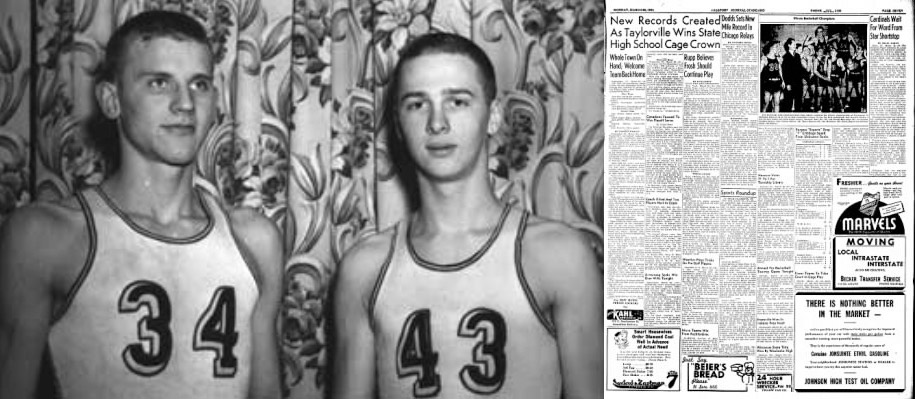
The author of Sweet Charlie, Dike, Cazzie, and Bobby Joe: High School Basketball in Illinois, Taylor Bell quoted Orr as saying, “Years later, I look back and realize we were the first unbeaten state champion. How the hell did we ever do it? You don’t realize it until much later, what a helluva thing it was.” Taylorville eventually retired Orr’s number along with Bontemps and in 2007 the Illinois High School Association named Orr as one of the 100 legends in Illinois basketball tournament history.
_____________
After graduating from Taylorville, Orr elected to attend the University of Illinois in nearby Champaign. Due to the war raging across the world, the collegiate prohibition against freshman in varsity competition was temporarily repealed and Orr took advantage. Thanks to his sturdy 6’3″ frame, Orr became a starter for the Illinois football team at right end. (Like Jack Trice’s time, players still went both ways on offense and defense.) The 1944 Illinois team was incredibly young, often using nine freshman in the starting eleven and finished the season with a 5 – 4 – 1 record.
Orr was part of an impressive freshman class, along with Buddy Young, a breathtakingly talented player who was a Black pioneer for Illinois and in the NFL. Young finished the season with 13 touchdowns, which tied the legendary Red Grange’s record. After being named to multiple All-American teams, Young also finished an impressive fifth in the Heisman Trophy voting, despite being a black freshman. (Syracuse running back Ernie Davis would become the first black player to win in 1961, while Johnny Manziel became the first freshman to win in 2012.) Young also tied a world record in the 60m dash on his way to winning multiple national championships in track. The early team picture below doesn’t have Young in it yet, but Orr is in the bottom right corner.
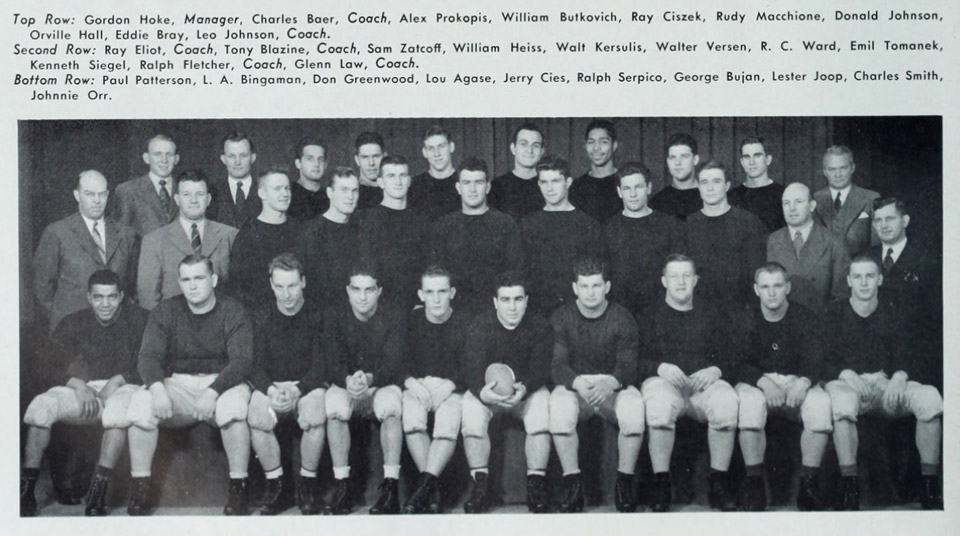
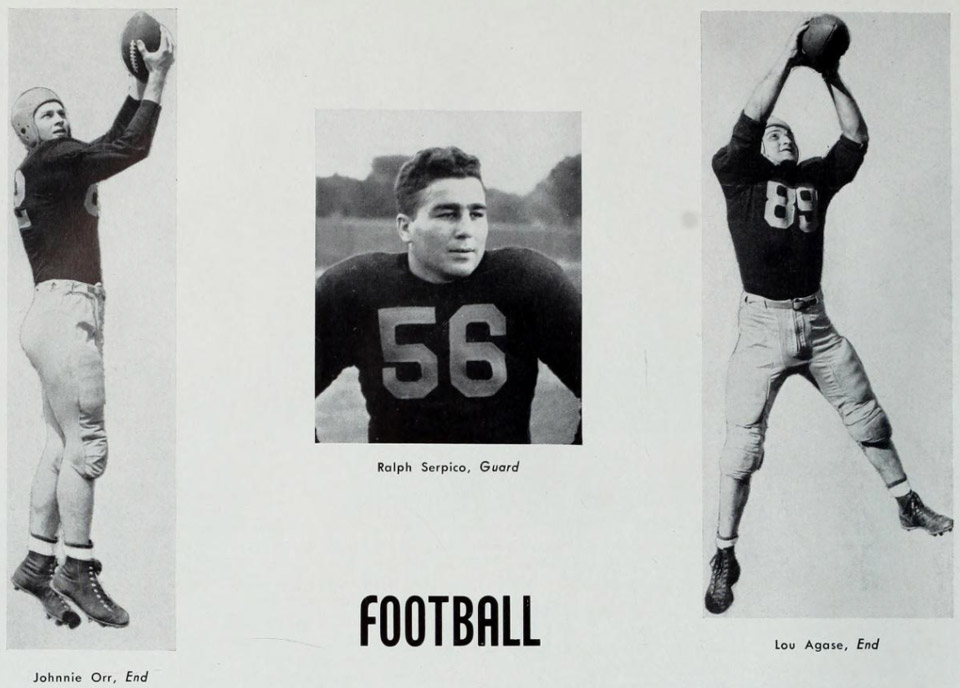
Despite the youth riddling the roster, the biggest loss the Illini suffered was a 16 point defeat to Purdue. Every game was competitive and in this game program from the Pittsburgh game we can see Orr’s position on the field in the very top right corner and his uniform number of 82.
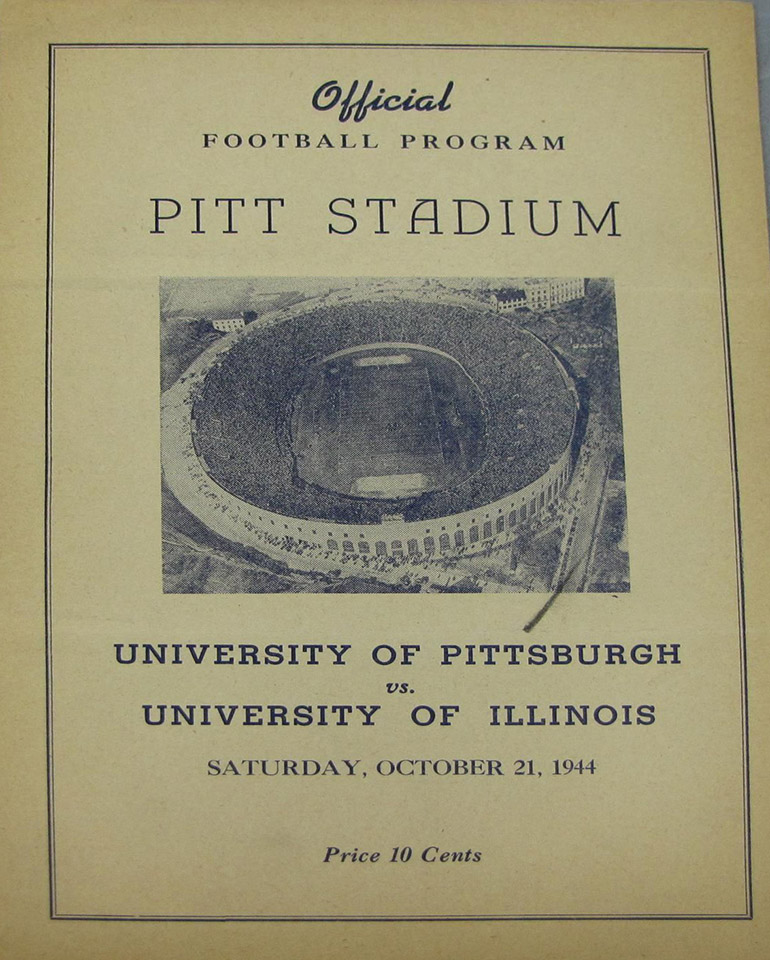
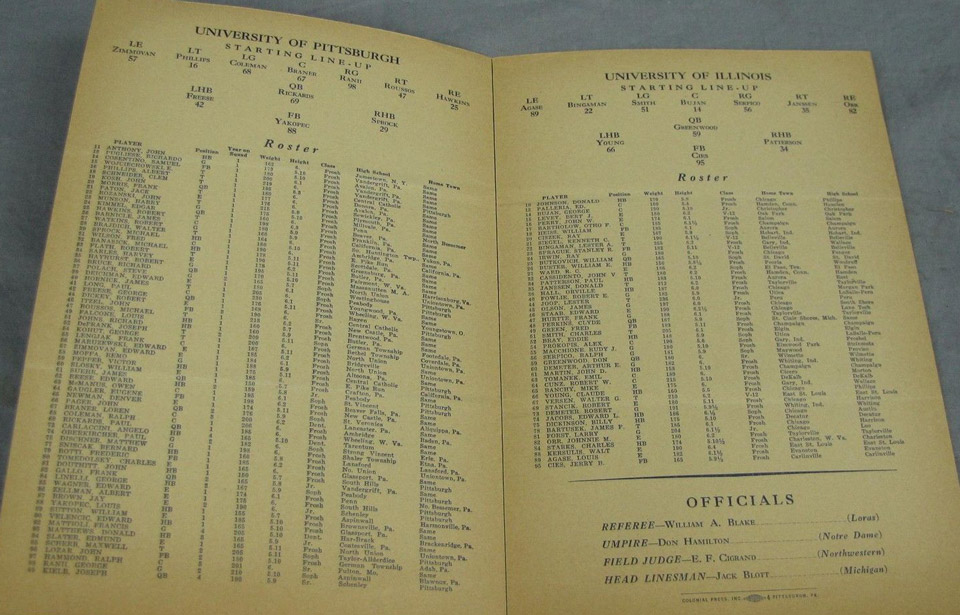
Towards the end of the season, Orr’s defensive prowess started to attract notice. The Illio yearbook called out Orr’s performance in the Notre Dame and Michigan games.
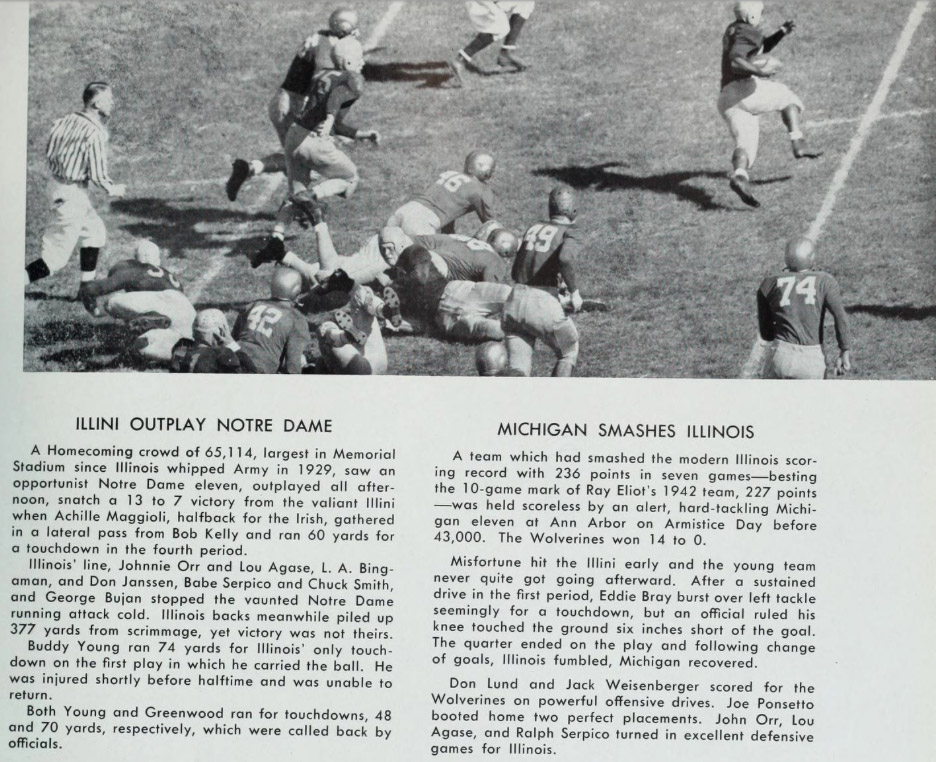
An intriguing side note: despite finishing with a 8 – 2 record, Notre Dame’s 1944 season was better known for the highly anticipated game against top-ranked Army at Yankee Stadium, which saw Army roll to an easy 59 – 0 victory. The game was so famous that American troops used the score to weed out German spies speaking English in Belgium during the Battle of the Bulge that winter.
_____________
With no time to spare, the calendar quickly flipped from football to basketball. The 1944-45 Illinois basketball team suffered from the same youth issues as the football team and finished the year with a 13 – 7 record. Their conference mark of 7 – 5 was good for third in the Big Ten, which was won by Iowa. Illinois also faced off against future NBA legend George Mikan’s tough Depaul team in two games. The Illini won the first game held at venerable Chicago Stadium, later known as Michael Jordan’s original Bulls home. In the second game–a close loss–Orr led Illinois with 12 points while Mikan dominated with 28. After the season, sophomore Walt Kirk would be named an All-American for his performance, while Orr played an important starting role in all games.
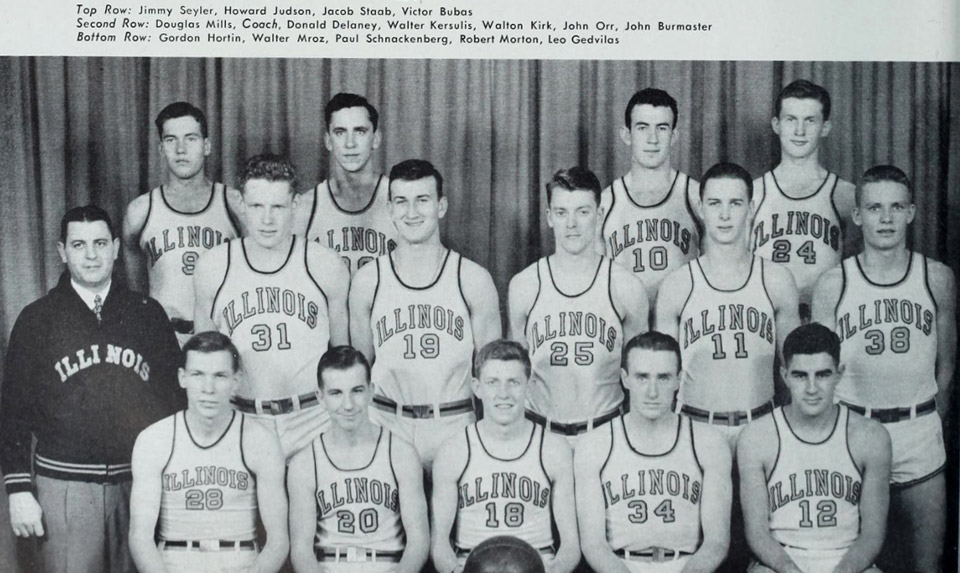
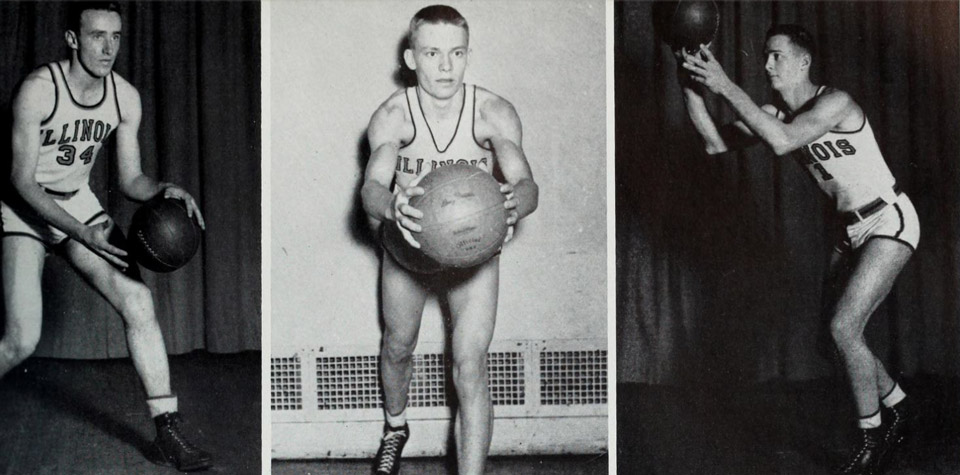
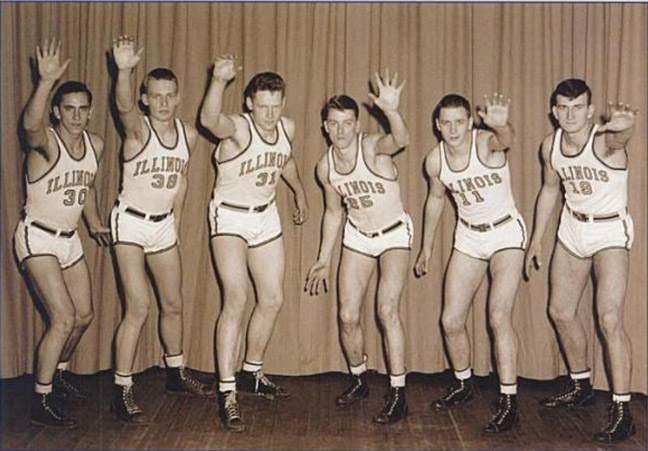
Perhaps the season highlight came in the home game against the Iowa Hawkeyes. The young Illinois team handed Iowa their only Big Ten defeat in a narrow, suspenseful game. It appears even as a young player, Orr enjoyed beating the Hawkeyes, a talent which would serve him well decades later. As the Illio yearbook remarked, “6,000 screaming fans jammed Huff gym for the game which Illinois finally won 43 – 42.” The yearbook also featured two great shots of Orr in the game. In the first, he can be seen handling the opening tipoff, and in the other he is attempting a shot in the lane over the Iowa defender.
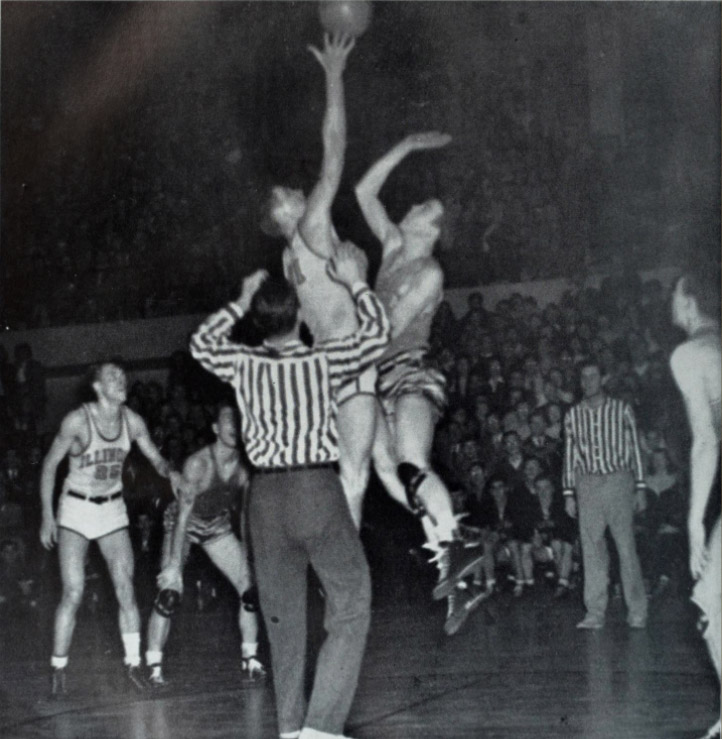
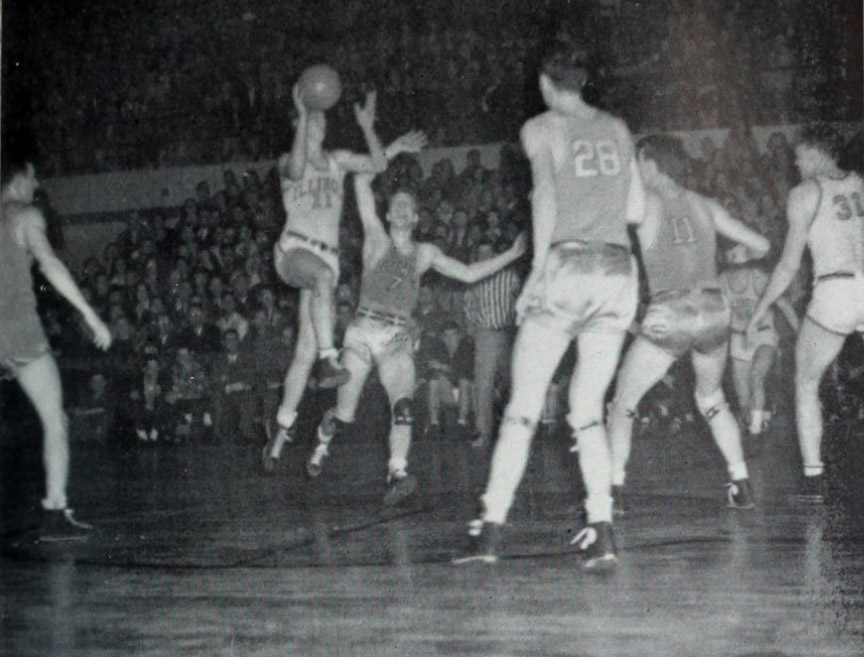
Elsewhere in the yearbook, Orr is visible in two other photos that appear to be against Ohio State and Minnesota.
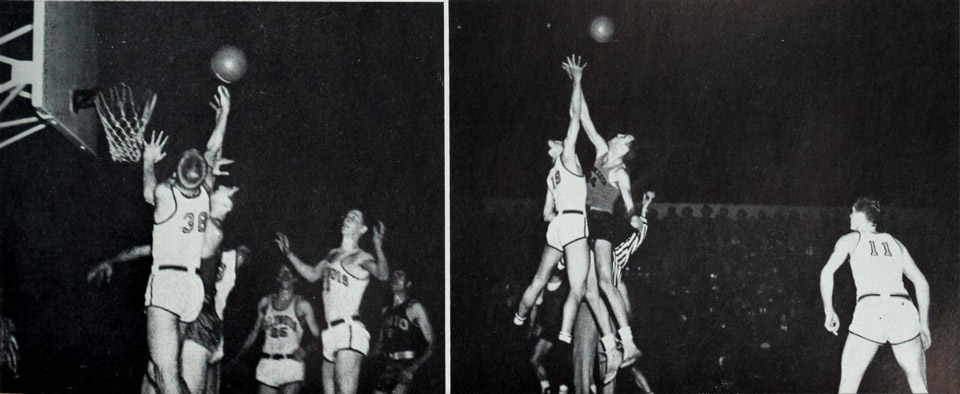
Orr may have played some baseball for Illinois, but I cannot find it in official Illinois records. Also, some articles suggest Orr gained second team Big Ten honors in football and honorable mention in basketball. I cannot confirm this to be the case. Officially, Illinois recognizes Orr as a 1944-45 letter winner in football and basketball, but the list of six 1944 all-conference Illinois football players doesn’t include Orr. Big Ten records only include first-team selections. Basketball is equally fruitless. I did find Orr was part of the “Tribe Of Illini.” See if you can find him in the crowd.
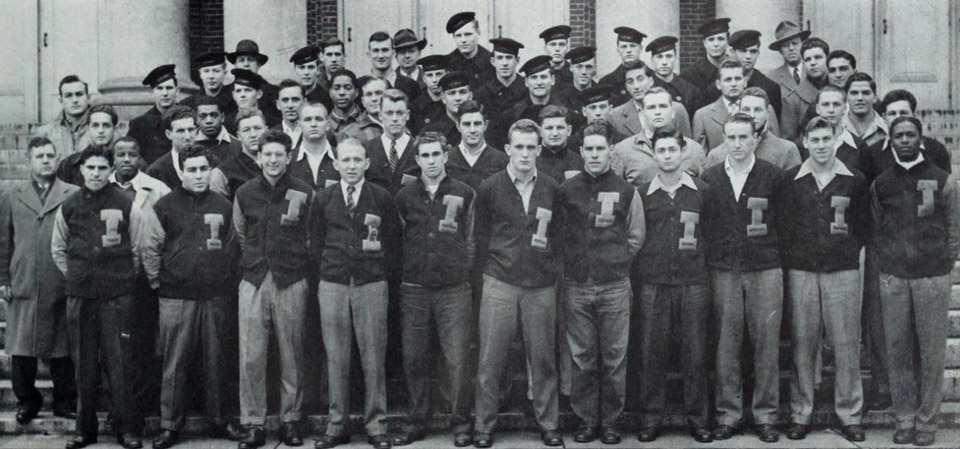
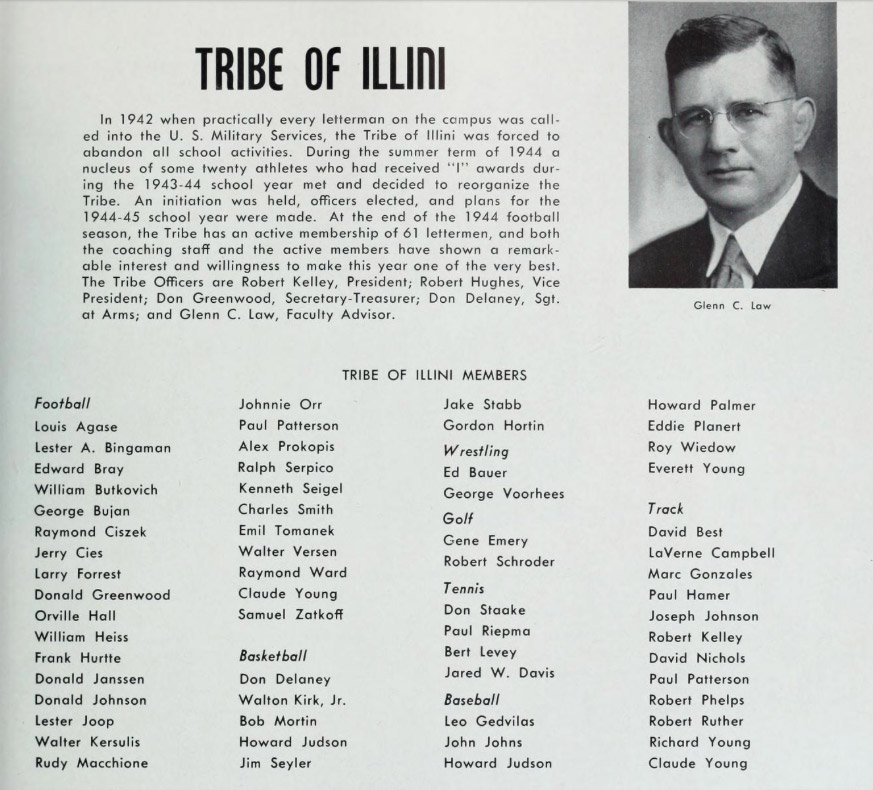
During Orr’s time at Illinois, a future team was enjoying some success of their own. Just across state lines, the Iowa State basketball team won the Big Six in both 1943-1944 and 1944-1945 and reached their only Final Four in the 1944 NCAA tournament–limited to eight teams at the time.
_____________
After the academic year was over, military service beckoned Orr, so he joined the Navy (or the Marine Corps). The 1961 Wisconsin basketball media guide stated “his college career was interrupted by service in the Marine Corps, and he coached and played on the Mare Island, California football team.” The 1969 Beloit College Hall of Honor blurb also mentioned his Marine Corps service. However, the December 1974 Michigan Alumnus magazine had this to say: “In 1945, John joined the Navy and became (he almost blushes when he says it) athletic director at Mare Island, California.” Either way, Orr served for a little over one year and was eager to resume his collegiate career.
After the war was over, Orr and Bontemps discovered that their high school coach, Dolph Stanley, was now coaching at a small Wisconsin college just north of the Illinois border. Stanley had arrived at Beloit College in 1945 as the head basketball coach, football coach, and athletic director. When Orr arrived in the fall of 1946, he joined the football and basketball teams. Bontemps also joined the basketball squad when he arrived in 1948.
Why did Orr and Bontemps choose to go to an unknown school? Coach Stanley’s vision of turning Beloit into a national power was part of it, but when they “returned to Illinois after the war, but so did the stars of the famous Whiz Kids team that had won two Big Ten titles. Illinois coach Doug Mills tried to keep Orr and Bontemps on ice until the Whiz Kids graduated, but they chose to reunite with Stanley at Beloit.” Orr’s later coaching style was influenced by his Beloit experience. “Stanley, who died in 1990, used his pressing, fastbreaking style to fill Beloit’s new field house and confuse opponents.”
In short order, bolstered by Orr’s play, Stanley’s Beloit basketball teams reeled off six consecutive Midwest Conference titles–including a streak of 40 wins. Orr was named to the All-Midwest Conference team three years in a row and also named twice to the NAIB (now NAIA) first team All-American team. Upon Orr’s graduation in 1949, he was the leading all-time scorer in Beloit history, but Coach Stanley’s cupboard wasn’t empty. Bontemps became the undisputed star through the 1950-51 season. Below is the 1947-48 team picture with Orr wearing 88.
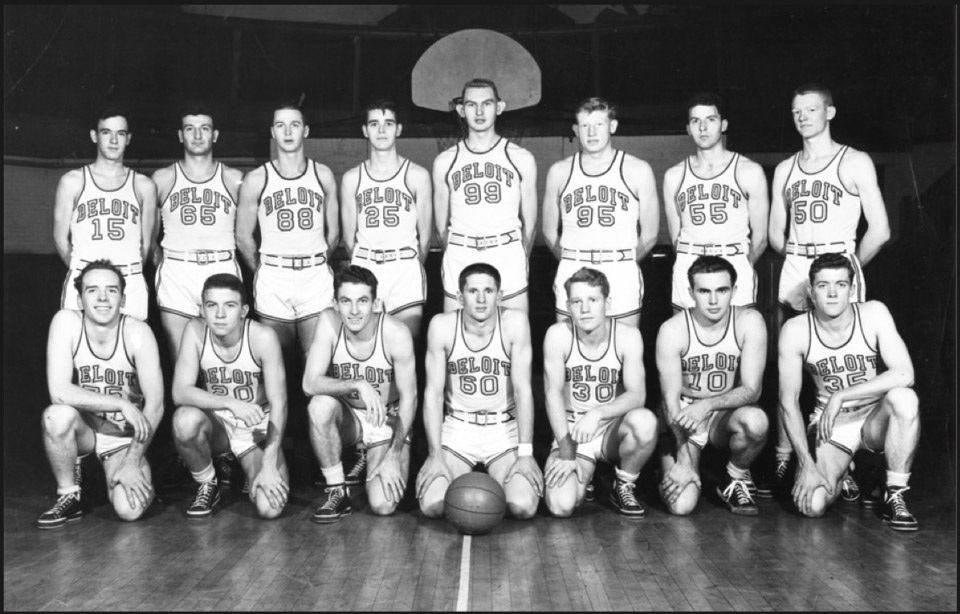
In 1973, Orr was named to the NAIA basketball Hall of Fame and the official NAIA biography said Orr:
“Helped trigger Beloit’s rise to national basketball prominence. Named most valuable player three successive years, he was a three-time All Midwest Conference and a two-time All NAIB choice. His 1,347 points rank him as Beloit’s second (in 1969, currently now fifth) all-time scorer. In addition to excelling in basketball, he won two football letters.”
Just two years later, Bontemps surpassed Orr’s scoring record and finished his career in 1951 as Beloit’s all-time scorer with 1,770 points–a record that was only recently beat in 2006. Bontemps is wearing 34 in this striking 1951 picture by Ray Metzker and more can be found in the Beloit archives here.
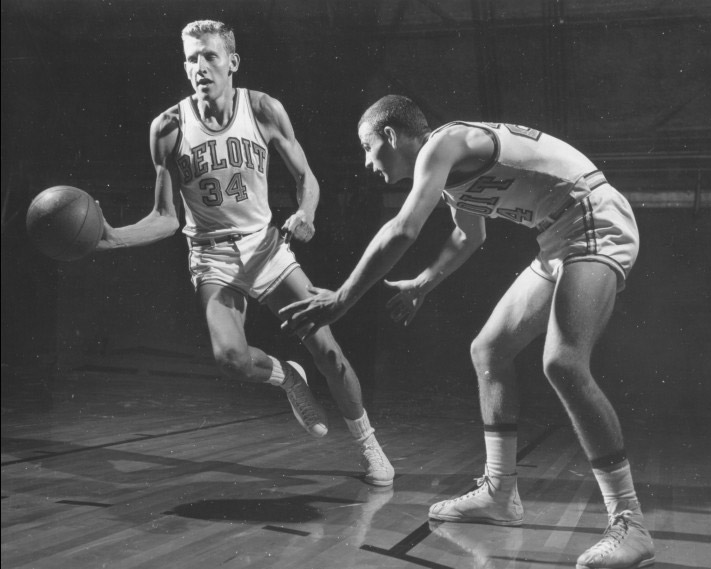
_____________
In 1948, the Minneapolis Lakers took a flyer on Orr, drafting him with the 106th overall pick in the BAA (Basketball Association of America–precursor to the NBA, which was formed when BAA merged with the National Basketball League in 1949). The following year after yet another stellar season at Beloit, Orr was once again drafted by the St. Louis Bombers in the second round with the 20th overall pick. Orr was the second youngest player on the team and made his professional debut on November 12, 1949 against the Indianapolis Olympians. On December 14, Orr set a career high with 12 points to pace the Bombers in a 79 – 61 loss to the Washington Capitols.
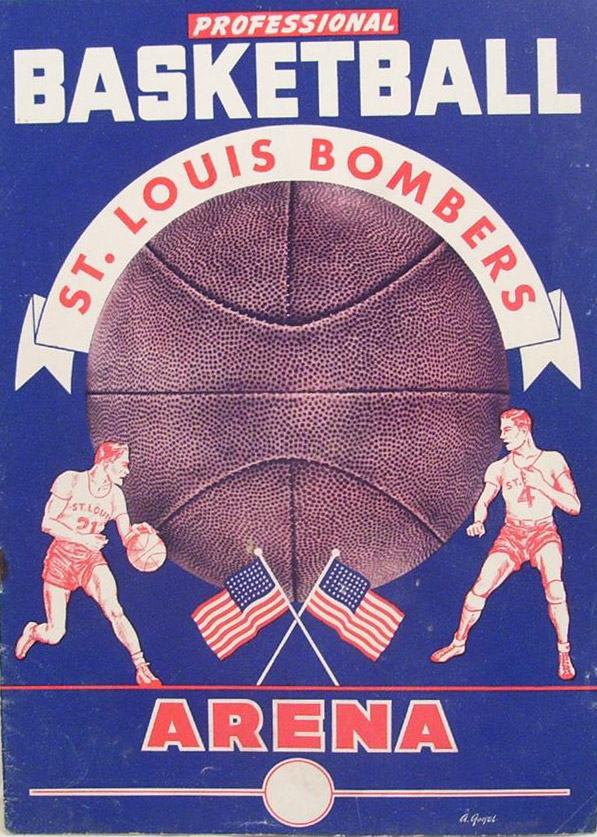
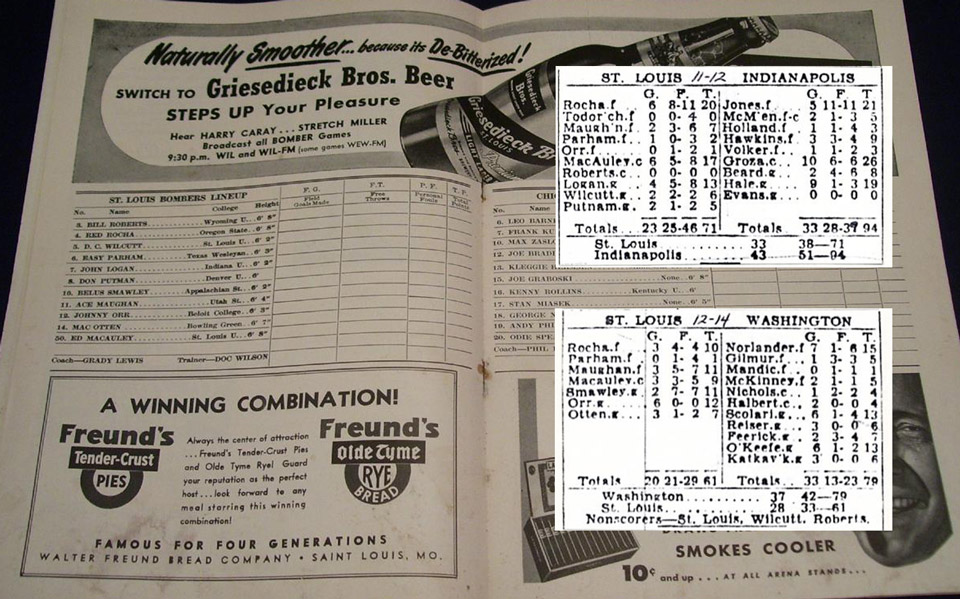
Unfortunately, the St. Louis team kept struggling and Orr was released to the Waterloo Hawks. On February 12, 1950, Orr made his debut with the Waterloo Hawks in a close loss to the Syracuse Nationals. In a 97 – 68 clobbering of the Denver Nuggets on March 8, Orr equalled his career high again with 12 points. The final game for Waterloo was on March 19 and Orr finished his professional career with two points in the victory over the Tri-Cities Blackhawks. During this time, Orr felt it was clear that pro basketball wasn’t his calling and wanted to give coaching a try instead. (The St. Louis Bombers picture below is from a 1947 game, but was representative of Orr’s experience.)
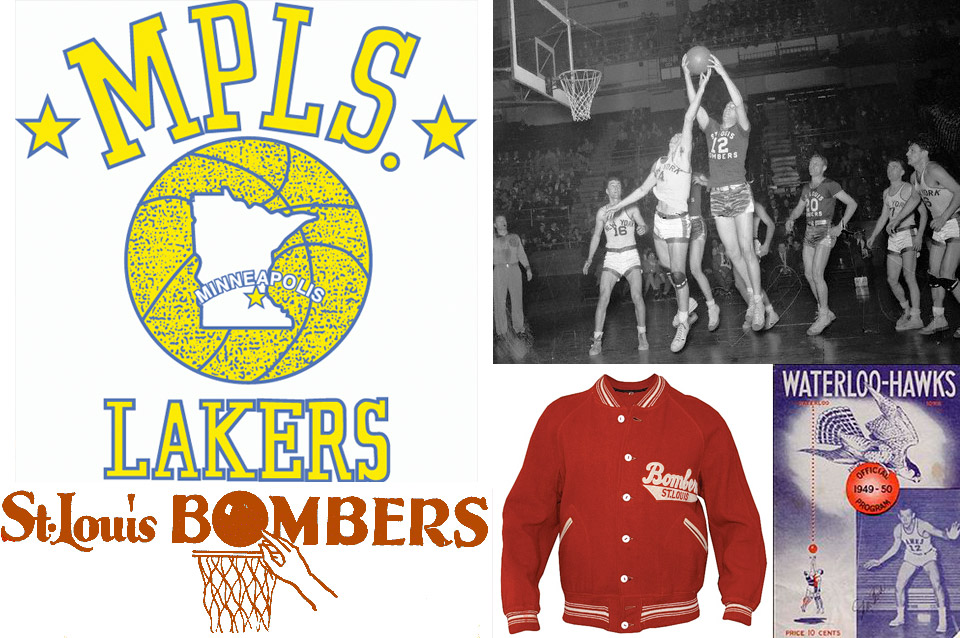
The following year, Orr’s high school and college teammate Ron Bontemps joined the AAU Peoria Cats that dominated the 1950s with five national championships and also won the 1954 World Championship in Brazil. At the time, the AAU squads were considered an equal, if not superior, alternative to other professional leagues including the NBA. Just four years later, the AAU All-American squad featured ISU legend Gary Thompson and NBA Hall of Famer K.C. Jones. (This NBA program below shows how limited the NBA reach was during the 1949-50 season, while AAU teams had a more national scope, including multiple teams in California.)
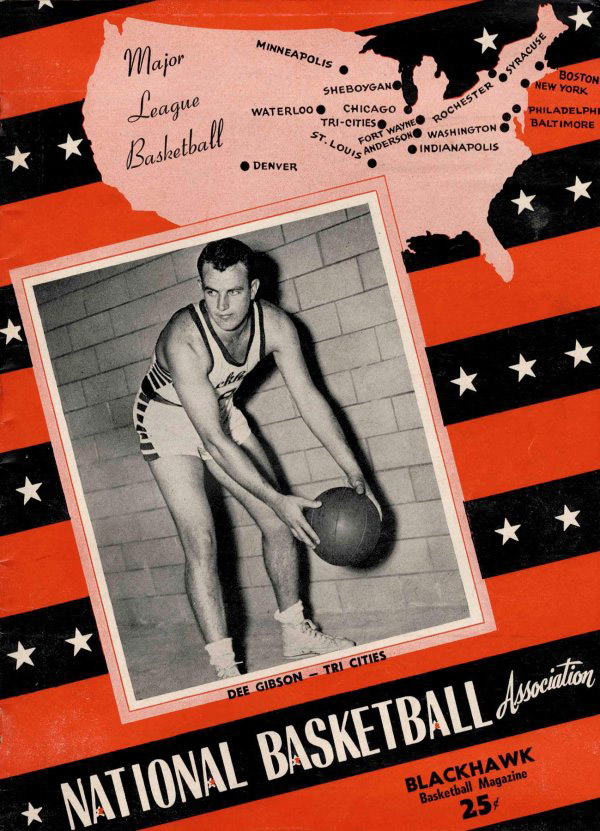
Thanks to his association with the AAU Peoria Cats, Bontemps went on to start on the 1952 USA Olympic basketball team which beat Russia for the gold medal in Helsinki, Finland. The 1952 games were unique for several reasons:
“For the first time since 1912, the Soviet Union elected to send selected athletes and teams to the Olympics. With the U.S. engaged in a bitter cold war struggle against the USSR, an American-Soviet Union match-up was viewed as exciting and politically important.
The U.S. Olympic Committee had also modified its format for the selection of the U.S. team. Invited to the trials were the NCAA winner and runner-up, the champions of the NAIB (predecessor of the NAIA), the top four AAU teams and the winner of the National Invitational Tournament. In the end, the 14-member USA team was made up by seven University of Kansas team members, five members of the AAU Peoria Caterpillars and two Phillips 66ers.”
Peoria Cats coach Warren Womble was the head coach of the squad and famed University of Kansas coach Phog Allen was the assistant coach.
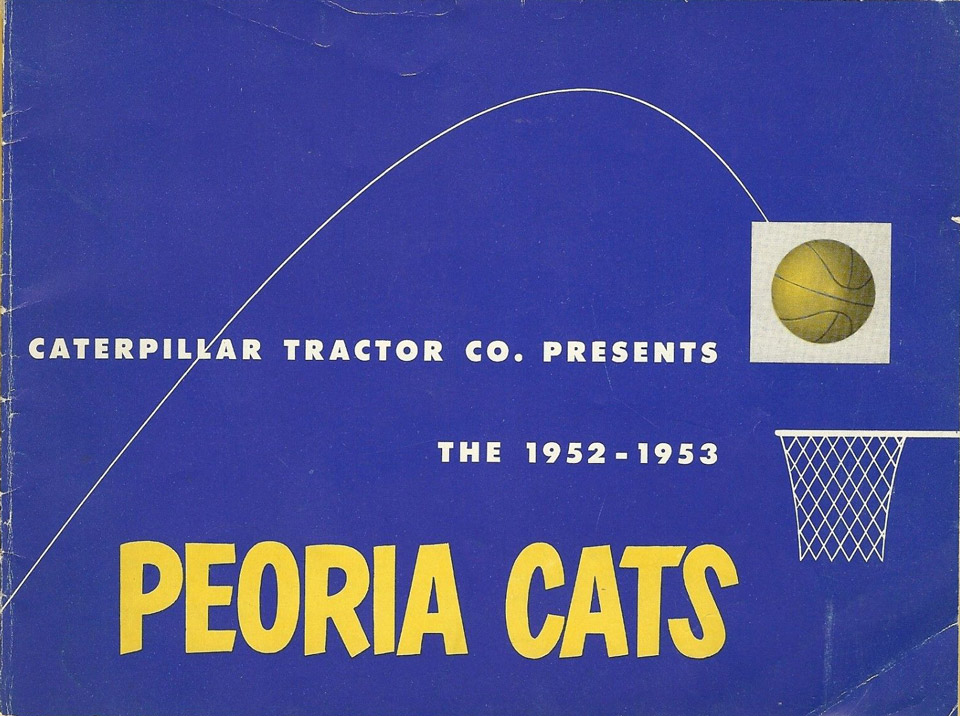
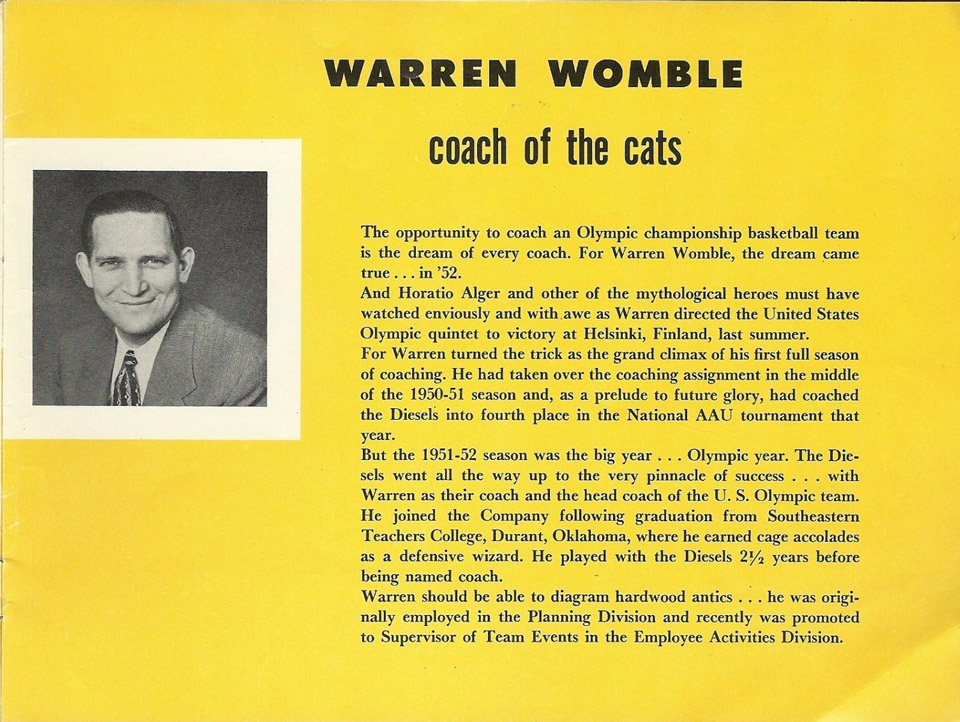
Had Orr decided to pursue the AAU route rather than the NBA, it is very probable he would’ve been on the same AAU team as Bontemps and he may have played in the 1952 Olympics as well. (I found several shaky sources suggesting Orr may have joined the Peoria Cats very briefly prior to his NBA experience, but can’t find anything concrete.)
However, the coaching bug had bitten Orr. An one-year stint at a Wisconsin high school was Orr’s first step, followed by a stop in Dubuque, Iowa. After becoming an assistant coach at the University of Wisconsin, Orr became the head coach at UMass in 1963 through 1966. After a brief break from coaching, Orr headed to the University of Michigan and the rest is history. Fittingly, Orr began his storied career in a small Midwest town with the Taylorville High School Tornadoes and finished in a small Midwest town with the Iowa State Cyclones. We will miss you Johnny.
